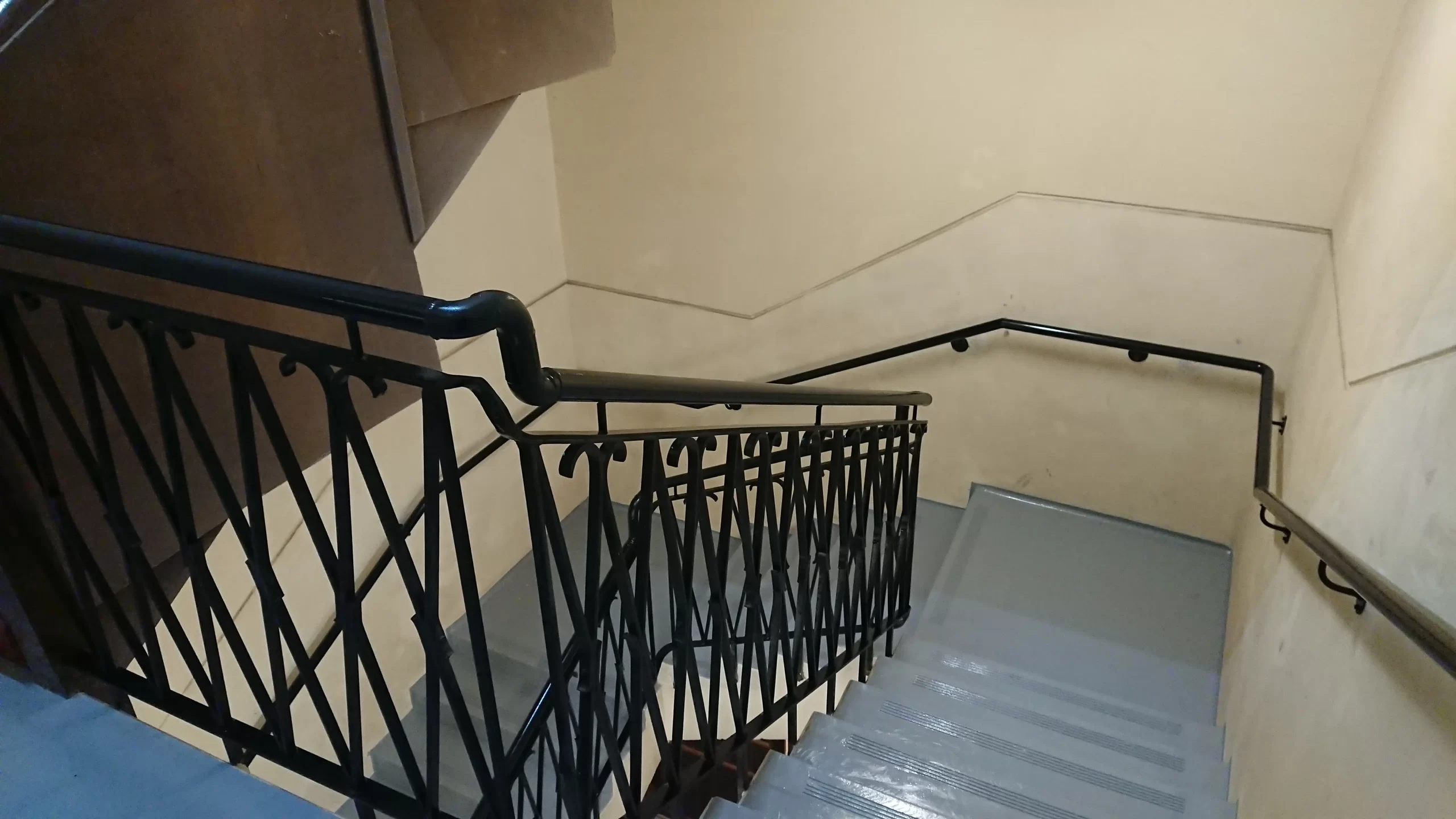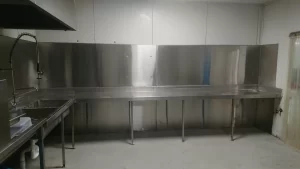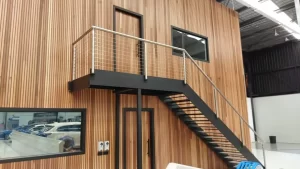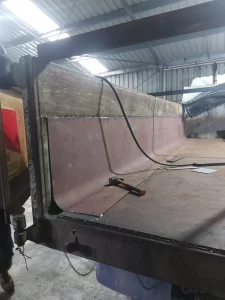Stair handrails, once viewed as simple necessities, have transformed over time, becoming pivotal design elements in architectural masterpieces.
Their dual role is unmistakable: they stand as guardians of safety while also elevating the aesthetic charm of a space.
With the innovation of custom welding, we provide master service for you by marrying functionality with unparalleled artistry.
So, in this article, we will provide a complete overview of stair handrails.
Let’s get started.
What are Stair Handrails?
Handrails have been used for centuries, providing necessary support for individuals navigating staircases.
Their primary role is to ensure safety, preventing slips and falls on your area. In modern architecture, however, they’ve taken on a dual role.
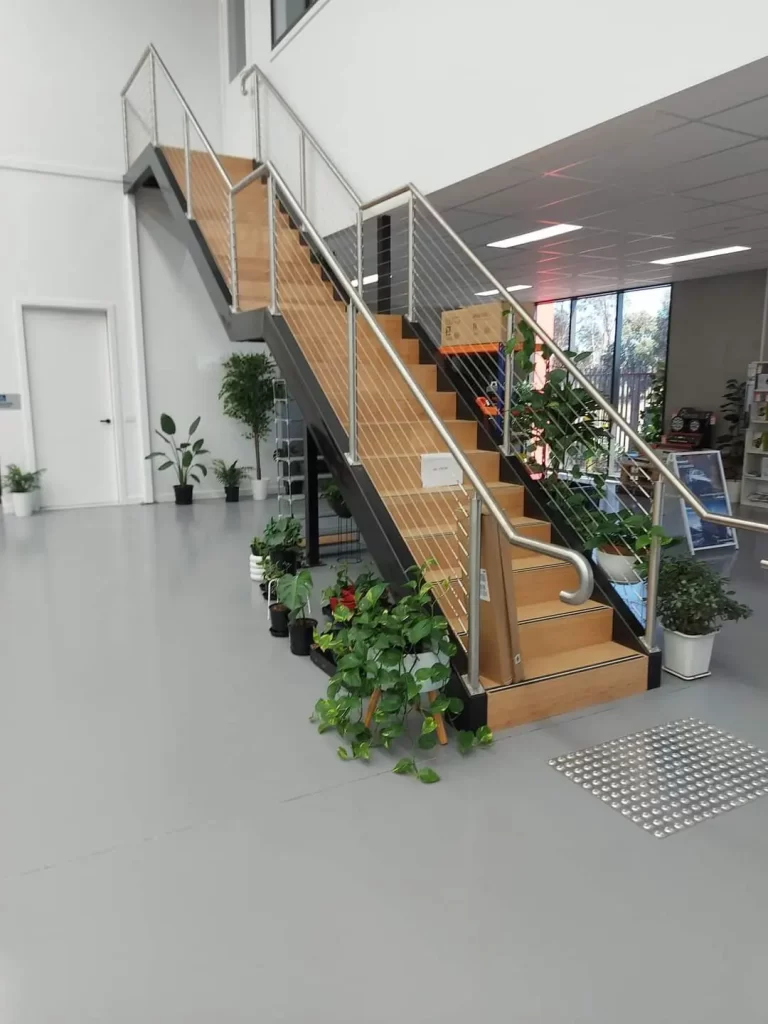
Beyond safety, handrails are now integral design elements, adding character and style to spaces.
This transformation has been facilitated by advancements in materials and design techniques. Regulations play a crucial role, dictating standards like height and distance from the wall, ensuring that design innovations don’t compromise safety.
Types of Stair Handrails
• Wooden Handrails:
The charm of wood is timeless. Wooden handrails, with their intricate carvings and natural finishes, can transform a space, making it feel warm and inviting. They’re versatile, fitting seamlessly into both traditional and modern interiors.
However, if you have these type, which require regular maintenance, such as polishing and varnishing, to maintain their sheen.
• Metal Stair Handrails:
Metal handrails, especially those made of wrought iron or stainless steel, are known for their durability. They can be molded into a variety of designs, ranging from intricate patterns to sleek, minimalist lines.
Given their resistance to environmental factors, they are suitable for both indoor and outdoor use
• Wooden Handrails:
The charm of wood is timeless. Wooden handrails, with their intricate carvings and natural finishes, can transform a space, making it feel warm and inviting. They’re versatile, fitting seamlessly into both traditional and modern interiors.
However, if you have these type, which require regular maintenance, such as polishing and varnishing, to maintain their sheen.
• Glass Handrails:
Frequently paired with metal to enhance durability, glass handrails provide a sleek, contemporary aesthetic. They are ideal for areas where a clear line of sight is preferred.
However, if you choose these handrails for your staircase, consistent cleaning is essential to keep their transparency intact.
• Composite Handrails:
Crafted from a blend of materials, these handrails prioritize longevity. While they capture the visual allure of wood or metal, they come with the added advantage of reduced up keep.
• Outdoor Stair Handrails:
These handrails are built tough to handle all kinds of weather. Using materials that don’t rust or wear out, they not only last long but also enhance your home’s exterior appeal
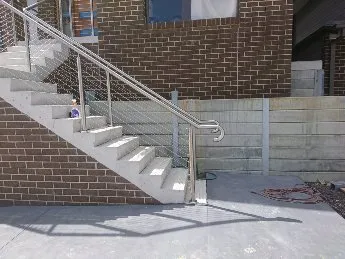
• Indoor Stair Handrails:
Made for inside spaces, these handrails blend safety with style. They fit any home’s look, from classic wood to sleek metal, and offer essential support for everyone.
Difference Between Handrails and Guardrails on Stairs
Handrails and guardrails are both crucial safety features in stair design, but they serve distinct roles. To better understand their differences, let’s look at a comparative table:
Feature | Handrails | Guardrails |
|---|---|---|
Purpose Design Placement Regulations | Provide support while navigating stairs. Designed to be held. Along the side of stairs for grip and balance. Governed by height and distance from the staircase. | Act as barriers to prevent falls. Designed as barriers, often taller than handrails. Around the perimeter of elevated areas. Governed by height and gap size for safety. |
While both handrails and guardrails prioritize safety, their design and function cater to different needs. It’s essential to ensure that both are installed according to regulations to maximize their effectiveness.
Stairs Handrails Installation
Installing handrails is a meticulous process. It’s not just about affixing the handrail to the wall; it’s about ensuring it’s at the right height, angle, and distance from the staircase. This precision ensures safety. While there are DIY kits available, professional installation is recommended, especially when custom welding is involved. A well-installed handrail not only ensures safety but also lasts longer.
We specialise in custom welding handrails as well as balustrades in Gippsland. So, you can read our previous article on custom welding handrails balustrades gippsland to know more about it
Now, here are general steps to consider during installation.
Planning and Measurement:
Measure the length of the staircase to determine the length of the handrail.
Decide on the height of the handrail. Standard height is usually between 34 and 38 inches from the stair nosing.
Mark the start and end points of the handrail on the wall.
Choose the Right Materials:
Based on the interior design and personal preference, select the material for the handrail (wood, metal, glass, etc.).
Ensure the chosen material meets safety standards and regulations.
Gather Necessary Tools:
Depending on the material and design, gather tools such as drills, screws, anchors, brackets, level, measuring tape, and saw.
Install Brackets: Mark the spots on the wall where brackets will be installed. Ensure they are evenly spaced and can support the weight of the handrail.
Attach the Handrail:
Place the handrail on the brackets. Ensure it’s level.
Safety Checks:
Apply weight to the handrail to ensure its securely attached and can support the necessary weight.
Finishing Touches (if applicable):
For wooden handrails, apply a finish or sealant to protect the wood and enhance its appearance.
For metal handrails, check for any sharp edges and smooth them out.
Maintenance and Durability of Stairs Handrails
Handrails, depending on the material, can last for decades. However, their lifespan can be extended with proper maintenance.
Wooden handrails might require periodic polishing and sealing, metal ones might need rust prevention, and glass ones demand regular cleaning.
Regular inspections can identify issues early on, ensuring the handrail remains sturdy and safe.
Cost Considerations
The cost of handrails can vary based on several factors:
- material
- design
- installation complexity
- customisation
While custom designs offer uniqueness, they can be pricier. It’s essential to strike a balance, ensuring you get value for your money without compromising on quality and safety.
Why Choose Our Services
South East Custom Welding isn’t just another welding company; we’re a team of artisans. Our expertise in custom welding ensures precision and quality in every project.
Having served the Gippsland region for many years, our commitment to excellence has earned us a distinguished reputation. Every project we handle reinforces this legacy.
Conclusion
Stair handrails are integral for safety, but they also offer an opportunity to elevate the design of a space.
As you consider installing or upgrading handrails, remember the importance of quality and craftsmanship.
Let South East Custom Welding in Gippsland be your partner in this endeavor.

